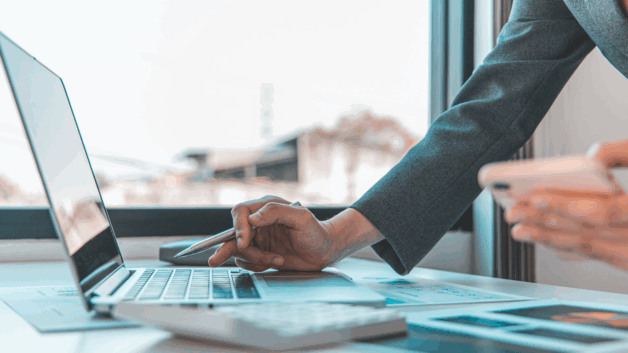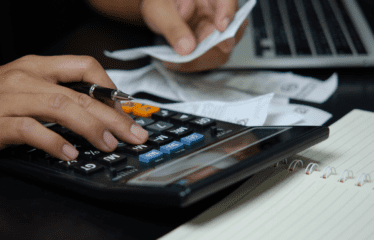

VAT Reclaim: How It Works, Key Considerations and Best Practices
- What is VAT?
- What is VAT Recovery?
- Who Can Reclaim VAT?
- What Expenses Can VAT Be Reclaimed On?
- How to Reclaim Foreign VAT?
- How Does the VAT Reclaim Process Work for Businesses?
- 1. Track Expenses and Keep Valid Records
- 2. Prepare Your VAT Return
- 3. Submit the Return and Receive Payment
- Fiscalead: Your VAT Representative
Reclaiming VAT (Value Added Tax) is often an overlooked opportunity to improve a company’s or public organisation’s cash flow. If your business is VAT registered, you can deduct the VAT paid on business-related purchases through your VAT return. Below is a clear and detailed explanation of how VAT recovery works, key terms, and how to successfully reclaim your VAT.
What is VAT?
Value Added Tax (VAT) is an indirect tax levied at each stage of the production and distribution chain. It applies to most goods and services and is known as an “indirect tax”, meaning it is charged to businesses, which then pass the cost on to the consumer.
Each country has its own rules and regulations regarding VAT.
What is VAT Recovery?
VAT recovery refers to the process by which businesses can reclaim the VAT paid on goods and services purchased for business purposes. This mechanism helps to avoid double taxation and ensures that only final consumption is taxed. The advantage of being VAT registered is that you save 20% on the purchase of your goods and services for your business.
It is an effective way to reduce operating costs and improve cash flow.
Businesses that fail to reclaim their VAT may lose up to 12% of their turnover.
To be eligible, the business must be VAT-registered and have an annual turnover of at least £85,000.
Who Can Reclaim VAT?
Businesses registered for VAT can reclaim the VAT paid on goods and services used in the course of their business activities. This is typically done through the periodic VAT return. It’s a valuable tool for reducing costs and optimising cash management.
What Expenses Can VAT Be Reclaimed On?
VAT recovery is a powerful lever to strengthen a company’s financial performance. You can reclaim VAT on many business-related purchases, provided certain conditions are met. Common categories include:
Goods:
- Office equipment, computers, supplies
- Raw materials used in production
- Software, peripherals, and IT hardware
- Vehicles: new car or utility vehicle for use solely for professional purposes.
Services:
- Rent for commercial premises (if VAT-eligible)
- Utility bills and subscriptions
- Marketing, advertising, and graphic design services
Professional fees (legal, tax, or accounting advice)
Travel and Subsistence Expenses:
- Business travel (train, flight, fuel, taxis, vehicle hire), for example, for a visit to a client. Note that most public transport is already exempt from VAT.
- Accommodation and meals during business trips (within allowable limits)
Non-recoverable expenses include:
- Personal or leisure-related expenses
- Client entertainment or hospitality
- Purchases unrelated to business activity
⚠️ Some goods or services may have both business and personal use. In such cases, only the business-use portion of VAT is recoverable. For example, a mobile phone used for both work and personal calls requires a proportional VAT calculation based on actual business use.
How to Reclaim Foreign VAT?
To be eligible for VAT recovery, a business must:
- Be registered for VAT in its jurisdiction (e.g. a UK business must have a valid VAT registration to reclaim VAT) but also keeping a VAT register will make your task easier.
- Hold valid invoices showing the amount of VAT paid, supplier details, date, and nature of the goods or services. You must keep in mind that it must always be proven that the use of a good or service is exclusively for professional use.
- Submit VAT returns according to the required frequency (monthly, quarterly, or annually)
- Use software that is Making Tax Digital (MTD) compliant in the UK
- Provide accurate and complete details when filing claims (supplier name, invoice date, VAT amount, etc.)
How Does the VAT Reclaim Process Work for Businesses?
Although it is an important way to optimise cash flow, the VAT reclaim process requires strict documentation, accuracy, and compliance with tax regulations. In the UK, VAT recovery is carried out through a VAT return submitted to HMRC. Here’s how the process works:
1. Track Expenses and Keep Valid Records
Every VAT-related business expense must be backed by documentation:
- Full invoices clearly stating the VAT rate and amount
- Receipts and payment evidence
- Accurate accounting entries
These documents are essential for proving that VAT was properly incurred and that the purchase relates to business activities.
2. Prepare Your VAT Return
Your quarterly (or annual) VAT return must include:
- The total VAT charged to customers (output VAT)
- The total VAT paid on business expenses (input VAT)
It is highly recommended to use MTD-compliant software to streamline the reporting process. The Making Tax Digital programme requires all VAT-registered businesses to:
- Automatically calculate the difference between output and input VAT
Submit returns digitally - Maintain a digital audit trail linking documents, calculations, and the final return
3. Submit the Return and Receive Payment
Once your VAT return is complete:
- Double-check the data (ideally with a VAT specialist)
- Submit the return through your MTD-compliant software
If additional documentation is required, HMRC may contact you.
If a VAT refund is due, it will be issued directly to the bank account associated with your VAT registration within 30 days. Without bank details, a check will be sent.
⚠️ Any errors or delays in payment can result in financial penalties. If you make a mistake, you have up to 4 years to correct it.
Fiscalead: Your VAT Representative
VAT is one of the most complex taxes businesses face. Between regulatory nuances, partial exemptions, and mixed-use purchases, the margin for error is significant. A misstep could mean penalties or missed refunds. That’s why working with a VAT advisor can make all the difference.
Fiscalead helps you to:
- Ensure your VAT returns are compliant
- Maximise the amount of VAT you reclaim
- Avoid common mistakes and costly audits
- Implement reliable VAT tracking systems
Need help? Our experts are here to support you.
Speak to a VAT expert
Other topics that may be of interest to you


